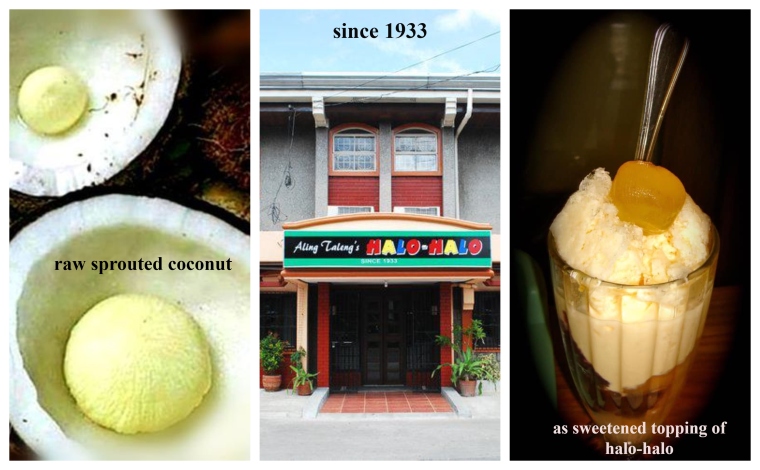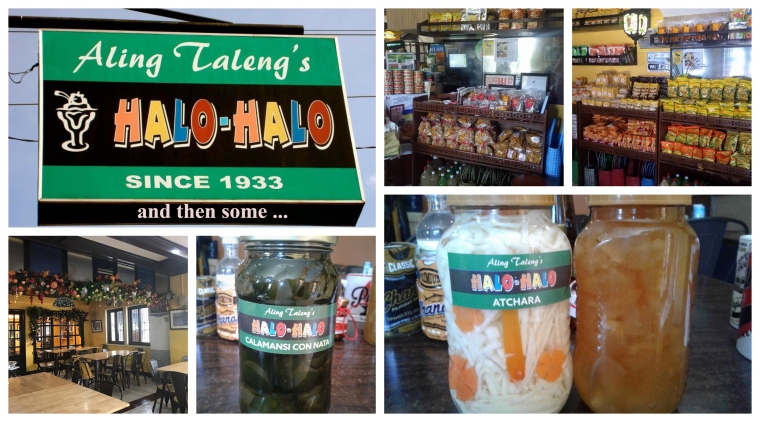Dearest readers, when you have the chance to visit the town of Paete1, in the province2 of Laguna3, you have to visit St. James the Apostle Parish Church. Allow Titas S to tell you about its unique features and beauty.
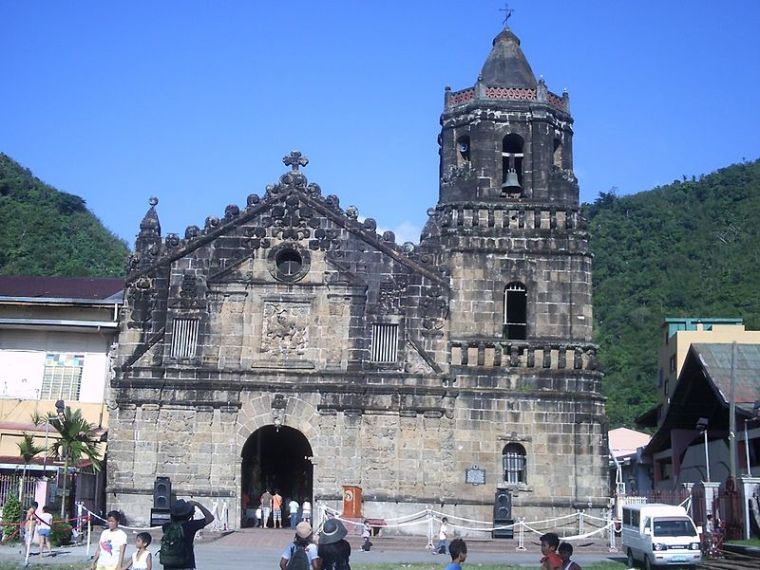 Facade, Saint James the Apostle Parish Church, Paete, Laguna – Photo by Carlo Joseph M. Moskito, own work, CC BY-SA 4.0, created 15 October 2014, https://en.wikipedia.org/wiki/Saint_James_the_Apostle_Parish_Church_(Paete)#/media/File:Facade_of_Paete-Church,_Laguna.jpg
Facade, Saint James the Apostle Parish Church, Paete, Laguna – Photo by Carlo Joseph M. Moskito, own work, CC BY-SA 4.0, created 15 October 2014, https://en.wikipedia.org/wiki/Saint_James_the_Apostle_Parish_Church_(Paete)#/media/File:Facade_of_Paete-Church,_Laguna.jpg
Here are 14 facts about St. James the Apostle Parish Church:
1.St. James the Apostle Parish Church is a Roman Catholic church located in the town of Paete1, in the province2 of Laguna3, in the Calabarzon4 Region5 of the Philippines.
 National Historical Commission of the Philippines historical marker, Paete Church, 1939
National Historical Commission of the Philippines historical marker, Paete Church, 1939
2. The patron saint of this church is James the Apostle6.

3. This Baroque7 church is 42 m (138 ft) long, by 7 m (23 ft) thick, by 42 m (138 ft) wide.
4. It is made of adobe bricks, a mixture of egg white and other native materials. Its elaborate Baroque style7 is combined with Oriental artistry.

 Intricate metalwork to the right of the altar with stained glass art, St. James the Apostle Parish Church, Paete, Laguna
Intricate metalwork to the right of the altar with stained glass art, St. James the Apostle Parish Church, Paete, Laguna
 The pulpit, St. James the Apostle Parish Church, Paete, Laguna
The pulpit, St. James the Apostle Parish Church, Paete, Laguna
5. The intricate retablo8 pieces were made by Paetenian natives, among them were Bartolome Palatino and Francisco Macahumpan.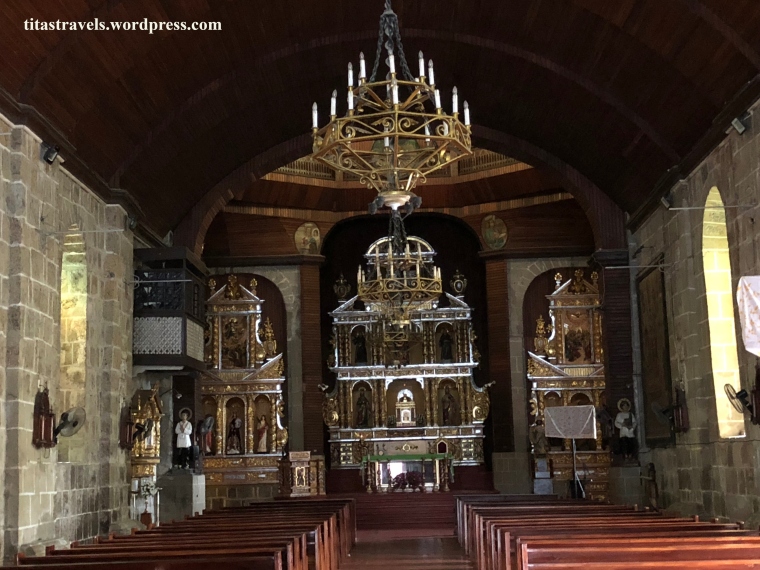
 Look above the altar!
Look above the altar!
6. The church’s facade is divided by a frieze9 that continues around the adjoining belltower. Several arched windows decorate the belltower.
7. It has bas reliefs10 of leaves and flowers and a sculpted image of St. James6, depicted as St. James the Moor-Slayer (Santiago Maramoros)11 in a central niche of the upper story. Unfortunately, the current relief of St. James, installed in 1804, is no longer the original image.
8. The triangular stepped pediment12 has a circular aperture directly above the image of St. James.
9. This church is known for its century-old murals, huge collection of images depicting the Passion of Christ13, and wooden images of saints.
The large wall paintings on wood panels inside the church were executed by a notable son of Paete, Luciano Dans. These depict Heaven, Earth and Hell (Langit, Lupa, Impiyerno), and large murals of St. Christopher (San Cristobal)14. Dans used natural color pigments mixed with volcanic ash and brushes made from cats’ hair to create the murals.

The large mural of St. Christopher14 on wood was purchased during the time of Father Francisco de Santa Gonzaleza for PHP22 on October 1852.

 I was so fascinated with the mural featuring a native-looking St. Christopher carrying Baby Jesus. How about you?
I was so fascinated with the mural featuring a native-looking St. Christopher carrying Baby Jesus. How about you?
Unfortunately, the two St. Christopher14 paintings, and a lot of wood panels inside the church, currently need immediate conservation since they were infested by termites.
It is sad that these murals were allowed to be infested by termites. I hope they will restore these almost 170 year-old wooden murals as soon as possible.
Another mural created by an unknown artist, and the oldest among all murals inside the church is the Last Judgment (Judicio Final), painted around 1720, located near the church altar. 
10. Paete was established as a town in 1580 by Franciscan priest, Fray Juan Plasencia, under the patronage of St. Lawrence15. Due to the scarcity of religious men, it was annexed to the visita16 of Lumban17 until October 20, 1600, and to Pangil18 until 1602. The first parish priest of Paete1, Fray Pedro de Buenaventura, was appointed in 1602.
11. The first stone church and convent were built by Paete1natives, under the supervision of Fray Andres de Puertellano in in 1646. This church underwent a lot of renovation due to natural calamities. This church was initially destroyed by an earthquake in 1717. A new stone church was built the same year, under Fray Francisco de la Fuente. It was completed in 1840, under the term of Fray Luis de Nambroca.
The church and convent were again destroyed by the 1880 Luzon earthquake. Father Gregorio Martin built a temporary small church of 33 m (108 ft) by 13.2 m (43 ft) by 8.6 (28 ft). In 1884, the church was rebuilt under Father Pedro Galiano, now facing the Laguna3 Lake, but this was again destroyed by another earthquake in August 20, 1937.
With a long history of losing the church building to earthquakes, the current Paete1 Church has large buttresses on each side to improve its earthquake resistance.
12. Did you know that this church served as a dungeon and torture house to the people of Paete1 during the Japanese Occupation of the Philippines (1942 – 1945) in World War II (1939 – 1945)?
13. At the start of the Lenten season, owners of privately owned religious images that were handed down from generations put up an exhibit of their religious icons on the church’s hall. The collection of images is one of the largest collection of images depicting the Passion of Christ13. This exhibit usually runs from Ash Wednesday till Holy Monday. On Holy Tuesday, a procession of miniature religious statues, called poon, are carried by children along the church patio. From Holy Wednesday up to Good Friday, locals hold processions of their religious images around the town.
My college buddies and I, during our early Visita Iglesia19 before the Metro Manila community quarantine, felt blessed when we visited this Paete1 church. Two nearby small rooms to the side of the church were filled with so many wonderful life-sized statues which came from various Paete families to commemorate the Lenten season in town. I was so much touched and full of admiration for the grade school students who served as guides, and who, proudly and patiently explained the nature of the yearly exhibit, as well as highlighted the different images with movable arms and miraculous nature. I salute the townspeople of Paete for allowed outsiders to view their collection of images and for the younger generation to be involved as guides. Here are some photos.
Dearest readers, do you know that the most famous poon during the Holy Week celebration is Mariano Cagahastian Madriñan’s replica of his own work of Mater Dolorosa (Our Lady of Sorrows)20? Madriñan, Paete’s hero, received a diploma of award and the King Alfonso XII of Spain Medal of Honor for his Mater Dolorosa work in 1882 which was exhibited at the International Exposition held in Amsterdam. The image of the Mother of Sorrows was known for its movable parts with excellent articulation. During procession, the image could be made to embrace the statue of Christ carrying His Cross, look up to gaze at St. Veronica’s veil and bless her with the sign of the cross. The image of St. Veronica could also move its hand to show the veil imprinted with Christ’s face.
14. A small stone chapel, or ermita, dedicated to Paete’s secondary patron, San Antonio Abad21, is located near the main church. His feast day is celebrated every January 17.
I miss the vendors who sell carved wooden religious and related items at the entrance of this church. This photo was taken 2011.
The information was obtained from the Wikipedia pages “Saint James the Apostle Parish Church”22.
So, have I convinced you visit this church? Why not include it in your next Laguna3 Visita Iglesia19?
You know what, dearest readers? Tita S was blessed to have done an early 2020 Visita Iglesia27 with her college buddies on March 8, before the Presidential proclamation of a of a public health emergency for the entire country due to COVID-19. See her posts so you can, somehow, virtually join her, and imagine that you also did the Visita Iglesia because it might be impossible to visit seven churches during this pandemic for Holy Week 2020: LAGUNA VISITA IGLESIA 2020: PART 1 (OF 2) and LAGUNA VISITA IGLESIA 2020: PART 2 (OF 2)
This is not a sponsored post. I just want my readers to know more about the Philippines.
Did you find this post informative? I would like to hear from you regarding your visit to St. James the Apostle Parish Church.
See other interesting places through other posts in this category and other categories of SCapades, Pinoy Delights, and Smart Traveler – Now You Know, Short and Simple, and Say, Say, Say. Happy reading, and I hope that you will appreciate what I shared and some of the featured destinations will be part of your future travel plans!
Remember to share this post with your friends, follow me by clicking on the bottom right corner of your device, and do not forget to like this post. Thank you.
– – – – – – – – – – – – – – – – – – – – – – – – – –
The following terms are defined for interested readers, especially those with “Senior-Moments”, not familiar with Filipino, Catholic and architectural terms, and those too busy or lazy to Google such terms:
1Paete is a fourth class municipality23 in the province2 of Laguna3, in the Calabarzon4 Region5 of the Philippines. It is located at the north-eastern part of Laguna. The earliest inhabitants were believed to be of Malay lineage, from Borneo, using their swift and sturdy boats called balangay. It was founded on July 25, 1580 by Spanish friars Juan de Plasencia and Diego de Oropesa of the Francisca Order. It has 9 barangays24. The name Paete is derived from the Tagalog25 word paet, meaning chisel, since the main industry of this town is woodcarving, thus, the town is called the Woodcarving Capital of the Philippines. The information was obtained from Wikipedia page “Paete.”26
2A province is the primary administrative and political division in the Philippines. It is the second-level administrative sub-division of a region5. There are 81 provinces (called “lalawigan”) in the Philippines. Each province is governed by an elected legislature called the Sangguniang Panlalawigan, and by an elected governor. Remember, a province in the Philippines is divided into cities and municipalities23 (or towns), which in turn, are divided into barangays24, formerly called barrios. The information was obtained from Wikipedia page “Provinces of the Philippines.”27 See a related post: Foreign Seniors Ask: WHAT ARE PROVINCES IN THE PHILIPPINES?
3Laguna is a province2 in the Calabarzon4 Region5 of the Philippines, located southeast of Metro Manila, north of Batangas, west of Quezon, south of the province of Rizal, and east of Cavite. This is the 7th richest province in the country, and the third largest province in the region5. It hugs the southern shores of Laguna de Bay, the largest lake in the country. It is composed of 24 municipalities23 and 6 cities. The provincial capital is the town of Santa Cruz since 1858, after Bay (1581-1688) and Pagsanjan (1688-1858). It is historically one of the first provinces in the Philippines to have been visited by Christian missionaries. Its main natural resources are its agriculture and fisheries, owing to its position near Laguna de Bay and the surrounding lowlands. The information was obtained from the Wikipedia page “Laguna (province)”28
4Calabarzon, or Region IV-A, or Southern Tagalog Mainland, is a Philippine region5 located in the island group of Luzon, with Calamba as its regional center. CALABARZON is an acronym for this region’s five provinces2: CAvite, LAguna3, BAtangas, Rizal, QueZON. It is the most populated region in the country and the country’s second most densely populated region, after Metro Manila. This region is located south of the National Capital Region (NCR), bordered by the provinces of Aurora, Bulacan and Metro Manila in the north, Manila Bay in the west, Tayabas Bay, and Sibuyan Sea in the south, and Lamon Bay, and the Bicol Region in the east. The information was obtained from the Wikipedia page “Calabarzon”29 and https://lga.gov.ph/region/region-iv-a.
5A region is an administrative division based on geographical, cultural and ethnological characteristics. Each region is further subdivided in provinces2, composed of cities and municipalities23 (or towns), which in turn, are divided into barangays24, formerly called barrios, according to Wikipedia page “Regions of the Philippines”.30 See a related post: Foreign Seniors Ask: WHAT ARE THE REGIONS OF THE PHILIPPINES?
6St. James the Apostle, James the Great, or James, son of Zebedee (around 3 AD – 44 AD) was one of the twelve apostles of Jesus, and brother of John the Apostle, according to the New Testament. He is the patron saint of Spain and, according to tradition, his remains are held in Santiago de Compostela in Galicia. He is also called St. James the Greater, to distinguish him from the Apostle James “the Less”, meaning he is older or taller than the latter. His feast day is on July 25. The information was obtained from the Wikipedia page “James the Great”.31
7Baroque architecture is characterized by: domes, often painted with a sky filled with angels and sculpted sunbeams, suggesting a vision of heaven; a quadratura32; grand stairways, winding upwards in stages, giving changing views from different levels; cartouche33 in elaborate forms and sculpted frames which break up the surfaces and add three-dimensional effects to the walls; mirrors to give the impression of depth and greater space, particularly when combined with windows; incomplete architectural elements like frontons with sections missing, causing sections to merge and disorient the eye; chiaroscuro, the use of strong contrasts of darkness and light for dramatic effect; overhead sculpture, on or just below the ceiling, made of wood (often gilded), plaster or stucco34, marble or faux finishing, giving the impression of floating in the air; Solomonic columns35 which give an illusion of motion; and, elliptical or oval spaces to eliminate right angles. The information was obtained from the Wikipedia page “Baroque architecture”.36
8A retablo is a Spanish term for: (a) an elaborate frame or shelf enclosing decorated panels or revered objects above and behind an altar, typically painting or sculpture, or a combination of the two; and, (b) a devotional painting or other image above and behind an altar. The information was obtained from the Wikipedia page “Retablo”37 and https://www.lexico.com/en/definition/retable.
9A frieze is a broad horizontal band of sculpted or painted decoration, especially on the wall near the ceiling.38
10Bas relief is a type of relief (sculpture) that has less depth to the faces, and figures than they actually have, when measured proportionately (to scale). This technique keeps the natural shapes of the figures and allows the work to be seen from many angles without twisting the figures themselves. The information was obtained from the Wikipedia page “Bas-relief”.39
11St. James the Moor-Slayer (Santiago Matamoros) is the name given to the representation (painting, sculpture, etc.) of the apostle James6, son of Zebedee, as a legendary, miraculous figure who appeared at the also legendary Battle of Clavijo40, helping the Christians conquer the Muslim Moors41. The story was invented centuries after the alleged battle was supposed to have taken place. The information was obtained from the Wikipedia page “Saint James Matamoros”.42 (insert pic)
12A pediment is an architectural element in architecture which consists of a gable43, usually of a triangular shape, placed above the horizontal structure of the lintel44, or entablature45, if supported by columns. It is sometimes the top element of a portico46. For symmetric designs, it provides a center point, and often used to add grandness to entrances. The tympanum47, the triangular area within the pediment, is often decorated with relief sculpture. The information was obtained from the Wikipedia page “Pediment”.48
13The Passion of Christ refers to the short final period in the life of Jesus. It includes 15 events: (1) His triumphal entry into Jerusalem; (2) the cleansing of the Temple of Jerusalem (when Jesus was angry and aggressive towards livestock merchants and money changers inside the temple); (3) The conspiracy against Jesus by the Jewish Sanhedrin49 priests and the teachers of the law, now known as Council Friday; (4) the Anointing of Jesus (by a woman during a meal a few days before Passover50 and Jesus said she will always be remembered); (5) the Last Supper shared by Jesus and His disciples in Jerusalem; (6) Jesus predicted the Denial of Peter; (7) the Agony in the Garden; (8) the Arrest of Jesus; (9) the Sanhedrin Trial of Jesus; (10) the Denial of Peter; (11) Pilate’s trial of Jesus; (12) the Way of the Cross; (13) the Crucifixion of Jesus; (14) the Burial of Jesus; and, (15) the Resurrection of Jesus. The information was obtained from the Wikipedia page “Passion of Jesus”.51
14Saint Christopher was a martyr in Asia Minor c. 251. He is known to have carried a child, who was unknown to him, across a river before the child revealed Himself as Christ, so he is considered the patron saint of travelers, according to the Wikipedia page “Saint Christopher”.52
15St. Lawrence or Laurence (AD 225 – 258) was one of the seven deacons of the city of Rome, Italy, under Pope Sixtus II who were martyred in the persecution of the Christians that the Roman Emperor Valerian ordered in 268, according to the Wikipedia page “Saint Lawrence”.53
16A visita, or chapel of ease, is a church building, other than the parish church, built within the bounds of a parish, for the attendance of those who cannot reach the parish church conveniently. It is more accessible to parishioners in subordinate villages than the main church, or could be a previous parish church until a larger building was constructed for that purpose. The information was obtained from the Wikipedia page “Chapel of ease”.54
17Lumban is a third class municipality23 in the province2 of Laguna3, in the Calabarzon4 Region5 of the Philippines. It is named after the Lumbang tree (Aleurites moluccanus). It is one of Laguna’s oldest towns, founded on September 22, 1578, and formerly included the towns of Santa Cruz, Pagsanjan and Cavinti. It is bounded on the north by the municipality of Kalayaan, on the northwest by Laguna de Bay, the southwest by Pagsanjan, on the southeast by Cavinti, and on the northeast by the province of Quezon. It is known as the Embroidery Capital of the Philippines and the Home of Lake Caliraya, a man-made lake. The information was obtained from the Wikipedia page “Lumban, Laguna”55 and http://calabarzon.dilg.gov.ph/132-old-lgus/old-laguna-lgus/586-lumban.
18Pangil is a fourth class municipality23 strategically located at the southern tip of Sierra Madre mountain range, in the province2 of Laguna3, in the Philippines. Its topography is generally flat, in between rolling and steep hills. It is subdivided into 8 barangays24. It was founded by Gat Pangil, who united 4 ancient settlements to establish a Tagalog25 kingdom in the area. This town is one of the oldest settlements in Laguna, rich in Hispanic, American and Japanese history. It gained recognition as a town through the Franciscan friars in 1579. The information was obtained from the Wikipedia page “Pangil”56
19Visita Iglesia, or Seven Churches Visitation, is the Roman Catholic Lenten practice to visit seven (and even 14) churches during Holy Week, traditionally on the evening of Maundy Thursday, to pray before the Blessed Sacrament in each church. There are no set prayers given by the Catholic Church for this activity, except to pray for the intentions of the Pope and recite the Lord’s Prayer, Hail Mary and Glory Be. Some may opt to pray the Stations of the Cross57. The information was obtained from the Wikipedia page “Seven Churches Visitation”.58 See a related post: Foreign Seniors Ask: WHAT IS VISITA IGLESIA?
20Our Lady of Sorrows, Our Lady of Dolours, the Sorrowful Mother, Mother of Sorrows, Our Lady of Piety, Our Lady of the Seven Sorrows, or Our Lady of the Seven Dolours, all refer to the Virgin Mary in relation to sorrows in her life, and portrays her in a sorrowful and tearful effect, with one or seven knives or daggers piercing her heart, often bleeding. Her feast is liturgically celebrated every September 15. The information was obtained from Wikipedia page “Our Lady of Sorrows.”59 See a related post: NOW YOU KNOW: NUESTRA SEÑORA DE LOS DOLORES DE TURUMBA
Now, you might be wondering what the Seven Sorrows (or Dolors) are. Well, think and look no more, these are events in the life of the Blessed Virgin Mary that are a popular devotion and are frequently depicted in art: the prophecy of Simeon60 (Luke 2:34-35), the flight into Egypt (Matthew 2:13-23), the loss of the Child Jesus in the temple of Jerusalem (Luke 2:43-45), Mary’s meeting Jesus on the Via Dolorosa61 (not in the New Testament), the Crucifixion of Jesus on Mount Calvary (Matthew 27:34-50, Mark 15:23-37, Luke 23:33-46, John 19:18-30), the piercing of the side of Jesus with a spear, and His descent from the Cross (John 18:34), and the burial of Jesus by Joseph of Arimathea62 (Matthew 27:57-61, Mark 15:43-47, Luke 23:50-53. John 19:40-42). These Seven Sorrows should not be confused with the five Sorrowful Mysteries of the Rosary. The information was obtained from the Wikipedia page “Our Lady of Sorrows”.59
21St. Anthony Abad was a Christian monk from Egypt, known as the Father of All Monks. He is called by various names: Anthony the Great, Anthony of Egypt, Anthony the Abbot, Anthony of the Desert, Anthony the Anchorite, and Anthony of Thebes. His feast day is celebrated on January 17. He was among the first monks to go into the wilderness, around AD 270, known to have endured supernatural temptation during his sojourn in the Eastern Desert of Egypt. He is considered the patron saint against infectious diseases, particularly skin diseases. The information was obtained from the Wikipedia page “Anthony the Great”.63
22“Saint James the Apostle Parish Church (Paete),” accessed February 3, 2020, https://en.wikipedia.org/wiki/Saint_James_the_Apostle_Parish_Church_(Paete)
23A municipality is a small, single urban administrative division, or local government unit (LGU), in the Philippines which has corporate status and powers of self-government or jurisdiction as granted by law. It is a unit under a province2, subdivided into barangays24, and is locally called “bayan”. In the Philippines, a municipality is headed by a mayor, a vice mayor, and members of the Sangguniang Bayan (legislative branch). It can enact local policies and laws, enforce them, and govern its jurisdictions. It can enter into contracts and other transactions through its elected and appointed officials and can tax as well. It enforces all local and national laws. There are almost 1,500 municipalities in the Philippines. The information was obtained from Wikipedia page “Municipalities of the Philippines.”64 See a related post: Foreign Seniors Ask: HOW MANY CITIES ARE THERE IN THE PHILIPPINES?
24A barangay in the Philippines is the smallest administrative division in the Philippines, headed by a barangay captain, aided by a Sangguniang Barangay (Barangay Council). It is the native Filipino term for a village. It was formerly called a barrio. In a metropolitan area, a barangay is an inner city neighborhood, a suburb, or a suburban neighborhood. The word barangay originated from the term “balangay”, a kind of boat used by a group of Austronesian people who migrated to the Philippines. A number of barangays grouped together is called a district. The information was obtained from Wikipedia page “Barangay.”65
25Tagalog refers:
(a) to the second largest ethno-linguistic group in the Philippines, after the Visayan people, numbering around 30 million, with most of them inhabiting Metro Manila, the Calabarzon4 region5 in southern Luzon, the islands of Marinduque and Mindoro in the Mimoropa Region, as well as a plurality in the provinces of Aurora, Bataan, Bulacan, Nueva Ecija and Zambales in Central Luzon. The information was obtained from Wikipedia page “Tagalog (people)”66
(b) the dialect spoken by the Tagalog people.
26“Paete,” accessed February 3, 2020, https://en.wikipedia.org/wiki/Paete
27“Provinces of the Philippines,” accessed July 17, 2018, https://en.wikipedia.org/wiki/Provinces_of_the_Philippines
28“Laguna (province),” accessed February 3, 2020, https://en.wikipedia.org/wiki/Laguna_(province)
29“Calabarzon,” accessed February 3, 2020, https://en.wikipedia.org/wiki/Calabarzon
30“Regions of the Philippines,” accessed July 17, 2018, https://en.wikipedia.org/wiki/Regions_of_the_Philippines
31“James the Great,” accessed February 3, 2020, https://en.wikipedia.org/wiki/James_the_Great
32A quadratura is a Baroque7 architectural feature which uses paintings in trompe-l’oeil67 of angels and saints in the dome and on the ceiling, combined with stucco34 frames or decoration. This style draws the eyes upward giving the illusion of three dimensions, and of looking through the ceiling to the heavens. The information was obtained from the Wikipedia page “Baroque architecture”.36
33A cartouche, or cartouch, is an oval or oblong design with a slightly convex surface, typically edges with ornamental scrollwork, used to hold a painted or low-relief design. The information was obtained from the Wikipedia page “Cartouche”.68
34Stucco refers to the cement-based plaster used for coating wall surfaces or molding into architectural decorations. It hardens into a highly durable material that requires little maintenance and can be used to obtain different textures and finishes.69
35A Solomonic column, also called Barley-sugar column, is a helical column, characterized by a spiraling twisting shaft like a corkscrew. It may be crowned with any design. The information was obtained from the Wikipedia page “Solomonic column”.70
36“Baroque architecture”, accessed January 17, 2020, https://en.wikipedia.org/wiki/Baroque_architecture
37“Retablo,” accessed February 3, 2020, https://en.wikipedia.org/wiki/Retablo
38https://www.lexico.com/en/definition/frieze
39“Bas-relief,” accessed February 3, 2020, https://simple.wikipedia.org/wiki/Bas-relief
40The Battle of Clavijo is a mythical battle which became a popular theme of Spanish traditions regarding the Christian expulsion of the Muslims. It was fought near Clavijo between Christians, led by Ramiro I of Asturias, and Muslims, led by the Emir of Cordoba. In the legend, James6, son of Zebedee, an apostle of Jesus, and future Saint James/Santiago, who died 800 years earlier, suddenly appeared and led an outnumbered Christian army to gain its victory. He became the patron saint of Spain and is known to Spaniards as Santiago Matamoros (“the Moor-killer)11. The information was obtained from the Wikipedia page “Battle of Clavijo”.71
41The Moors were the Muslim inhabitants of the Maghreb (Northwest Africa), the Iberian Peninsula, Sicily, and Malta, during the Middle Ages (5th – 15th century), according to the Wikipedia page “Moors”.72
42“Saint James Matamoros,” accessed February 3, 2020, https://en.wikipedia.org/wiki/Saint_James_Matamoros
43A gable is the generally triangular portion of a wall between the edges of intersecting roof pitches, according to the Wikipedia page “Gable”.73
44A lintel, or lintol, is a structural horizontal block that spans the space or opening between two vertical supports. It can be a decorative architectural element, or a combined ornamented structural item. It is often found in portals, doors, windows and fireplaces. The information was obtained from the Wikipedia page “Lintel”.74
45An entablature is the superstructure of moldings and bands which lies horizontally above columns, resting on their capitals (the topmost portion of a column). The information was obtained from the Wikipedia page “Entablature”.75
46A portico is a porch leading to the entrance of a building, or extended as a colonnade, with a roof structure over a walkway, supported by columns or enclosed by walls, widely used in ancient Greece, and influenced most Western cultures. The information was obtained from the Wikipedia page “Portico”.76
47A tympanum is a semi-circular or triangular decorative wall surface over an entrance, door or window, which is bounded by a lintel or an arch. It often contains sculpture or other imagery or ornaments. The information was obtained from the Wikipedia page “Tympanum”.77
48“Pediment,” accessed February 3, 2020, https://en.wikipedia.org/wiki/Pediment
49The Sanhedrin were assemblies of Jewish courts, of either 23 (lesser Sanhedrin) or 71 (Great Sanhedrin) elders, known as rabbis, appointed to sit as a tribunal in every city in the ancient Land of Israel. The information was obtained from the Wikipedia page “Sanhedrin”.78
50Passover is a major Jewish holiday and one of the most widely celebrated Jewish holidays. In the Book of Exodus, God helped the Israelites escape slavery in ancient Egypt by inflicting ten plagues upon the Egyptians before the Pharaoh would release the Israelite slaves. The latter were instructed to mark the doorposts of their homes with the blood of a slaughtered spring lamb, and upon seeing this, the spirit of the Lord knew to pass over the first-born in those homes, hence, the English name of this holiday. Passover commences on the 15th of the Hebrew month of Nisan and lasts for 7-8 days. The information was obtained from the Wikipedia page “Passover”.79
51“Passion of Jesus,” accessed February 3, 2020, https://en.wikipedia.org/wiki/Passion_of_Jesus
52“Saint Christopher,” accessed February 3, 2020, https://en.wikipedia.org/wiki/Saint_Christopher
53“Saint Lawrence,” accessed February 3, 2020, https://en.wikipedia.org/wiki/Saint_Lawrence
54“Chapel of ease,” accessed February 3, 2020, https://en.wikipedia.org/wiki/Chapel_of_ease
55“Lumban,” accessed February 3, 2020, https://en.wikipedia.org/wiki/Lumban
56“Pangil, Laguna,” accessed February 3, 2020, https://en.wikipedia.org/wiki/Pangil,_Laguna
57The Stations of the Cross or the Way of the Cross, Ways of Sorrow, or Via Crucis, refers to the series of fourteen images depicting Jesus Christ on the day of His crucifixion and accompanying prayers, considered to be patterned after the Via Dolorosa61 in Jerusalem which is believed to be the actual path Jesus walked to Mount Calvary for His crucifixion. The devotion of Roman Catholics to do the Way of the Cross during Holy Week is like a spiritual pilgrimage through the contemplation of the Passion of Christ (the final period of the life of Jesus from His entrance in Jerusalem till His crucifixion). The 14 stations are: (1) Pilate condemns Jesus to die; (2) Jesus accepts His cross; (3) Jesus falls for the first time; (4) Jesus meets His mother, Mary; (5) Simon helps carry the cross; (6) Veronica wipes the face of Jesus; (7) Jesus falls for the second time; (8) Jesus meets the women of Jerusalem; (9) Jesus falls for the third time; (10) Jesus is stripped of His clothes; (11) Jesus is nailed to the cross; (12) Jesus dies on the cross; (13) Jesus is taken down from the cross; and, (14) Jesus is placed in the tomb. All these are according to the Wikipedia page “Stations of the Cross”.80
58 “Seven Churches Visitation,” accessed March 21, 2018, https://en.wikipedia.org/wiki/Seven_Churches_Visitation
59“Our Lady of Sorrows,” accessed February 3, 2020, https://en.wikipedia.org/wiki/Our_Lady_of_Sorrows
60Simeon, according to Luke 2:25-35, was a just and devout man of Jerusalem who met Mary, Joseph, and Jesus as they entered the temple to fulfill the requirements of the Law of Moses on the 40th day from Jesus’ birth, at the presentation of Jesus at the Temple. The Holy Spirit visited Simeon and told him that he would not die until he had seen the Lord’s Christ. When he took Jesus into his arms, he uttered a prayer and gave a prophecy alluding to the crucifixion. This event is commemorated every February 2 as Candlemas, or more formally, the Presentation of the Lord, the Meeting of the Lord, or the Purification of the Virgin. His prophecy is used in the context of Our Lady of Sorrows20, and venerated as a saint with feast day On February 3. The information was obtained from Wikipedia page “Simeon (Gospel of Luke).”81
61Via Dolorosa, Sorrowful Way or Way of Suffering, is believed to be the actual path Jesus walked to Mount Calvary on His way to the crucifixion in the Old City of Jerusalem. The winding route from the former Antonia Fortress to the Church of the Holy Sepulchre, a distance of about 600 meters (2,000 feet), is a celebrated place of Christian pilgrimage. This current route was established in the 18th century and is marked by nine Stations of the Cross57, with the remaining five stations, located inside the Church of the Holy Sepulchre. The information was obtained from Wikipedia page “Via Dolorosa.”82
62Joseph of Arimathea, according to all four canonical gospels, was the man who assumed responsibility for the burial of Jesus after His crucifixion. According to John 19:38, upon hearing of Jesus’ death, this secret disciple of Jesus “asked Pilate (Roman governor who presided at the trial of Jesus and gave the order for His crucifixion) that he might take away the body of Jesus, and Pilate gave him permission.” He immediately purchased a line shroud (Mark 15:46) and proceeded to Golgotha to take the body of Jesus down from the cross. Joseph and Nicodemus took the body and bound it in linen cloths with the spices that the latter bought, according to John 19:39-40. He is the Patron of Funeral Directors and Undertakers and his feast day is March 17. The information was obtained from Wikipedia page “Joseph of Arimathea.”83
63“Anthony the Great,” accessed February 3, 2020, https://en.wikipedia.org/wiki/Anthony_the_Great
64“Municipalities of the Philippines,” accessed July 17, 2018, https://en.wikipedia.org/wiki/Municipalities_of_the_Philippines
65“Barangay,” accessed January 29, 2019, https://en.wikipedia.org/wiki/Barangay
66“Tagalog (people),” accessed January 29, 2019, https://en.wikipedia.org/wiki/Tagalog_(people)
67Trompe-l’oeil is an art technique that uses realistic imagery to create the optical illusion that the depicted objects exist in three dimensions. The term is French for “deceive the eye”. The information was obtained from the Wikipedia page “Trompe-l’oeil”.84
68“Cartouche”, accessed January 17, 2020, https://en.wikipedia.org/wiki/Cartouche
69https://www.thebalancesmb.com/choose-right-stucco-mix-844655
70“Solomonic column”, accessed January 17, 2020, https://en.wikipedia.org/wiki/Solomonic_column
71“Battle of Clavijo,” accessed February 3, 2020, https://en.wikipedia.org/wiki/Battle_of_Clavijo
72“Moors,” accessed February 3, 2020, https://en.wikipedia.org/wiki/Moors
73“Gable,” accessed February 3, 2020, https://en.wikipedia.org/wiki/Gable
74“Lintel,” accessed February 3, 2020, https://en.wikipedia.org/wiki/Lintel
75“Entablature,” accessed February 3, 2020, https://en.wikipedia.org/wiki/Entablature
76“Portico,” accessed February 3, 2020, https://en.wikipedia.org/wiki/Portico
77“Tympanum (architecture),” accessed February 3, 2020, https://en.wikipedia.org/wiki/Tympanum_(architecture)
78“Sanhedrin,” accessed February 3, 2020, https://en.wikipedia.org/wiki/Sanhedrin
79“Passover,” accessed February 3, 2020, https://en.wikipedia.org/wiki/Passover
80”Stations of the Cross,” accessed March 21, 2018, https://en.wikipedia.org/wiki/Stations_of_the_Cross
81“Simeon (Gospel of Luke),” accessed February 3, 2020, https://en.wikipedia.org/wiki/Simeon_(Gospel_of_Luke)
82“Via Dolorosa,” accessed February 3, 2020, https://en.wikipedia.org/wiki/Via_Dolorosa
83“Joseph of Arimathea,” accessed February 3, 2020, https://en.wikipedia.org/wiki/Joseph_of_Arimathea
84“Trompe-l’oeil”, accessed January 17, 2020, https://en.wikipedia.org/wiki/Trompe-l’oeil


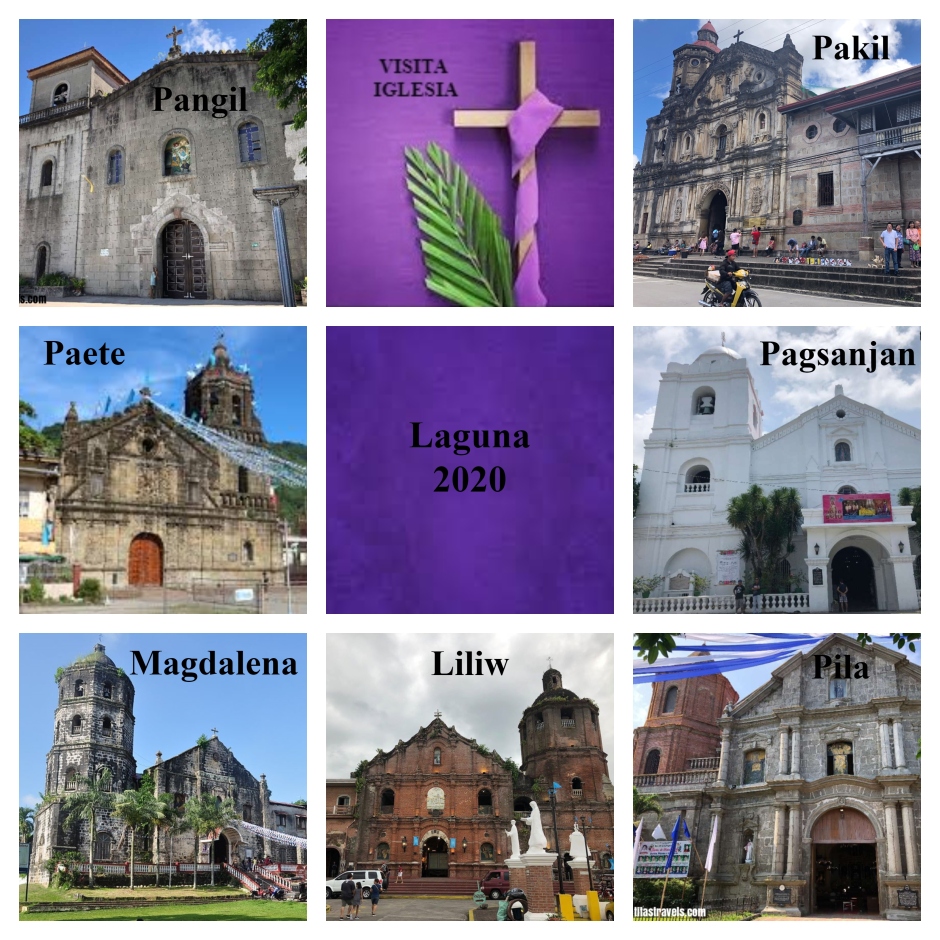
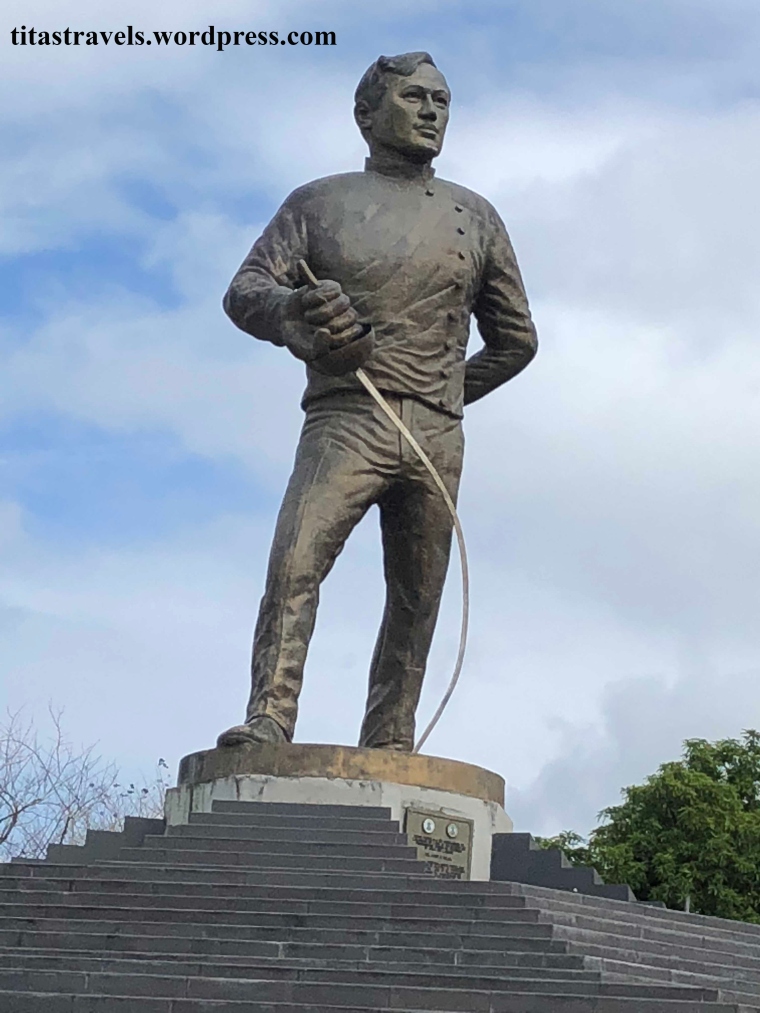
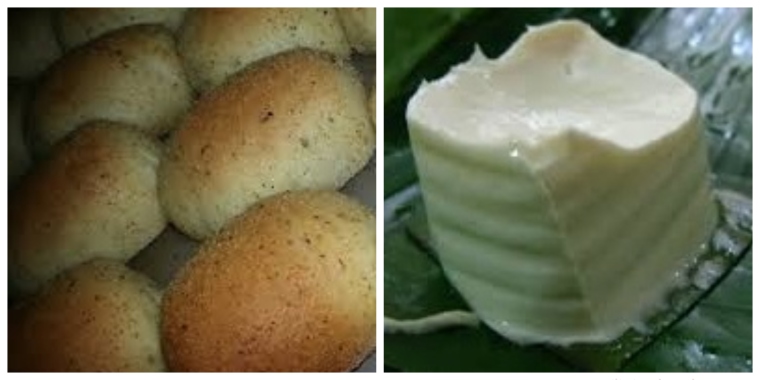

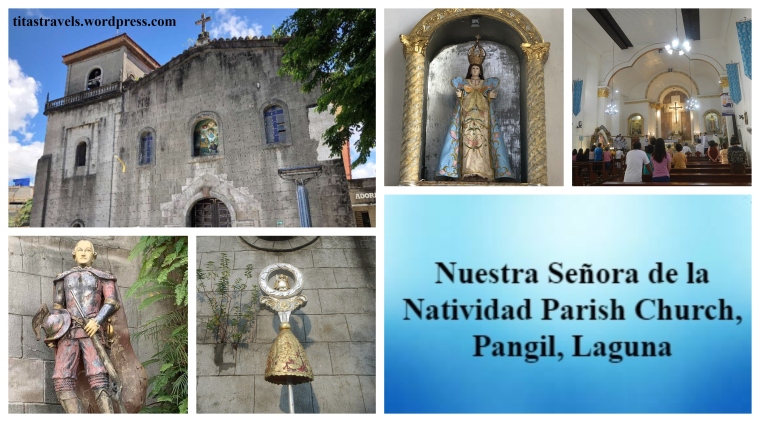
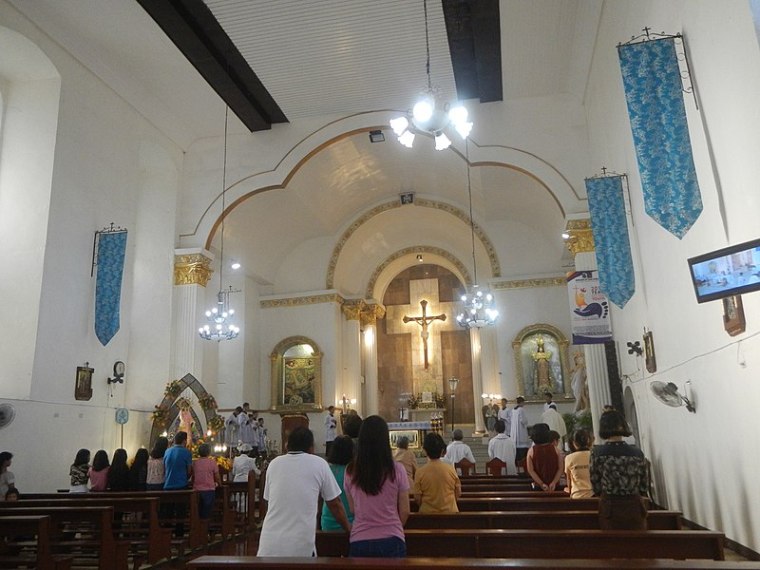 Interior, facing the altar, Nuestra Señora de la Natividad Parish Church, Pangil, Laguna Source: Judgefloro, own work, created 12 May 2019,
Interior, facing the altar, Nuestra Señora de la Natividad Parish Church, Pangil, Laguna Source: Judgefloro, own work, created 12 May 2019,  Interior, looking at the entrance, Nuestra Señora de la Natividad Parish Church, Pangil, Laguna – Source: Judgefloro, own work, created 12 May 2019,
Interior, looking at the entrance, Nuestra Señora de la Natividad Parish Church, Pangil, Laguna – Source: Judgefloro, own work, created 12 May 2019, 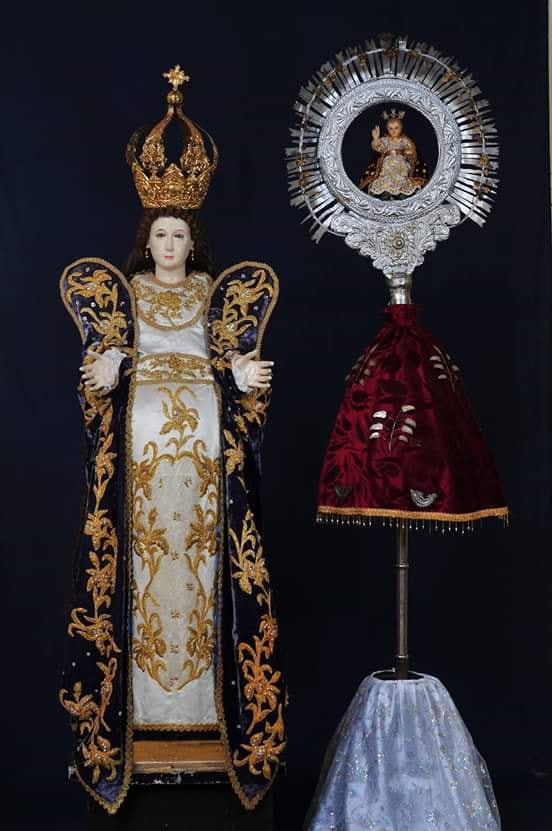
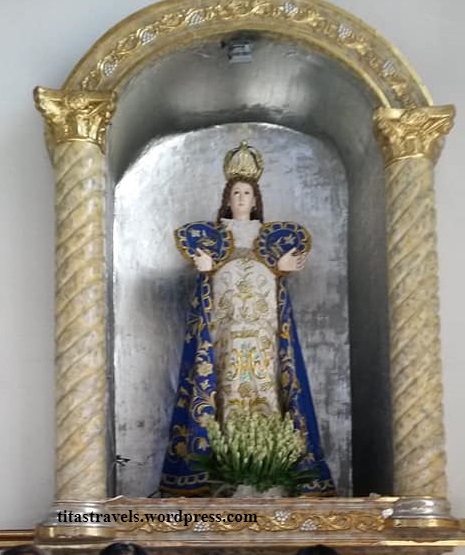
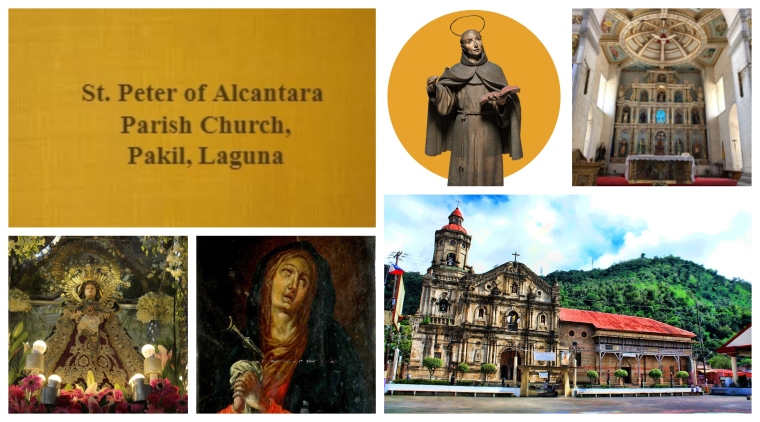
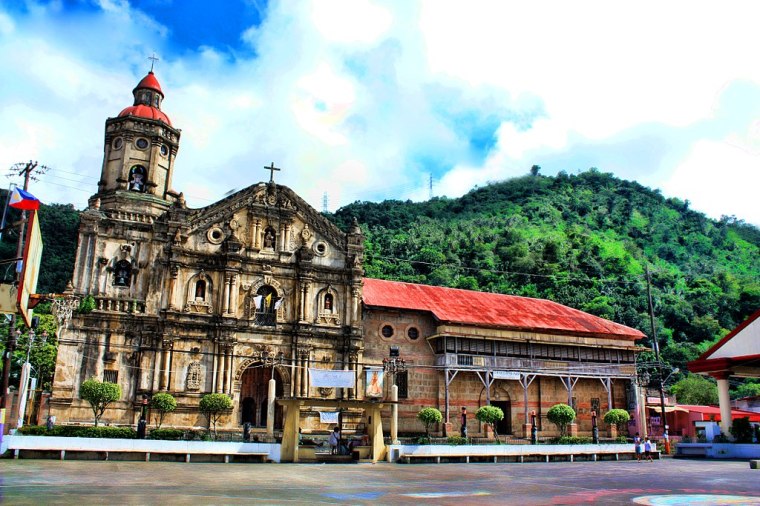 Saint Peter of Alcantara Parish Church, Pakil, Laguna, Home of Our Lady of Turumba By Richard Eusebio, own work, CC BY-SA 3.0, created 30 November 2011,
Saint Peter of Alcantara Parish Church, Pakil, Laguna, Home of Our Lady of Turumba By Richard Eusebio, own work, CC BY-SA 3.0, created 30 November 2011, 
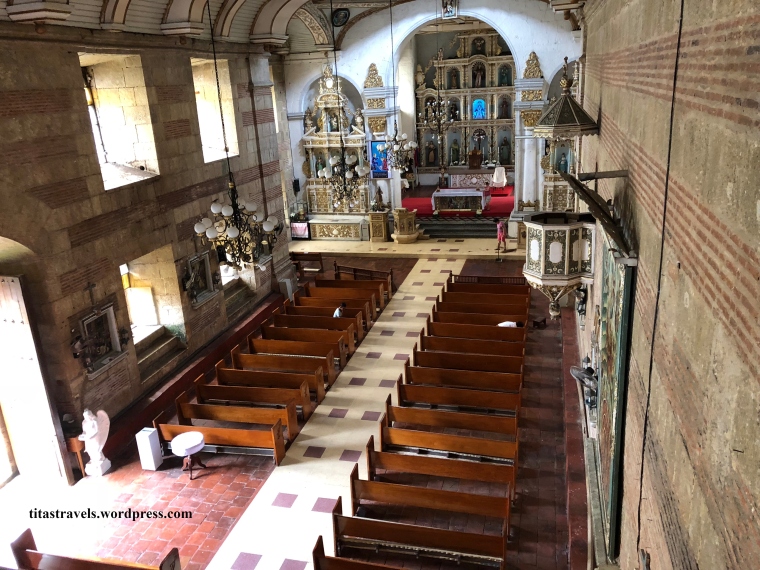
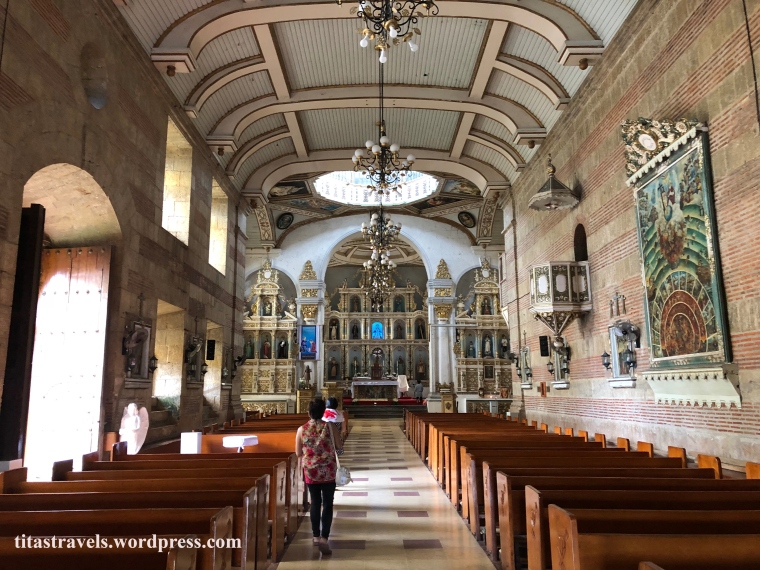
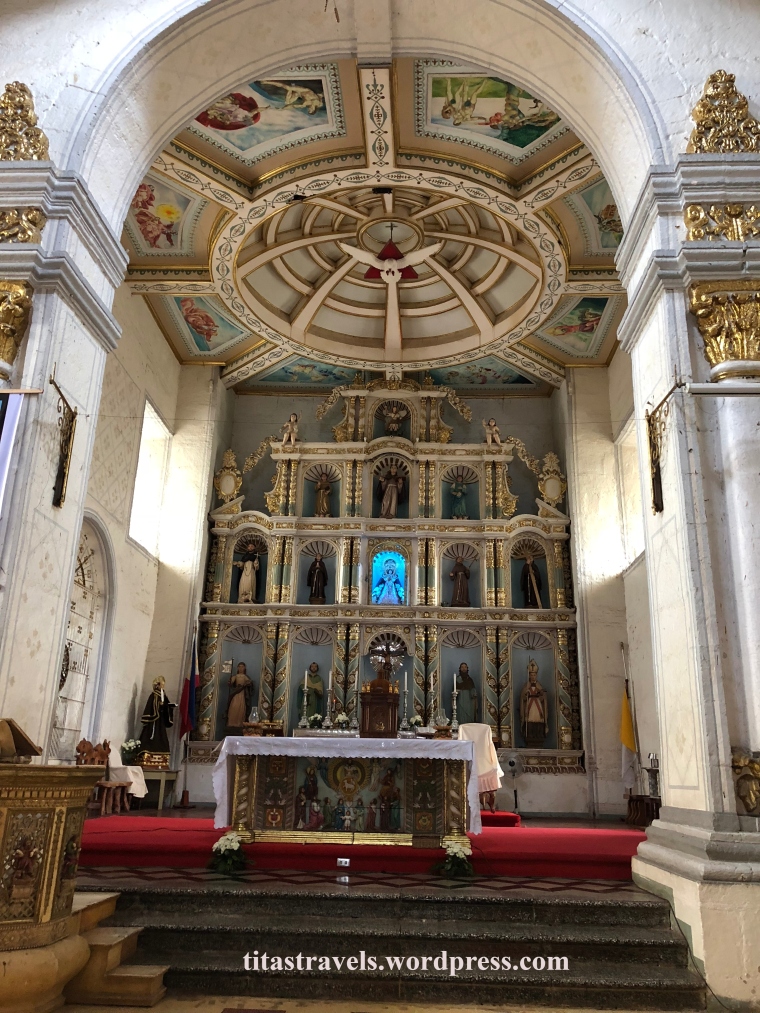
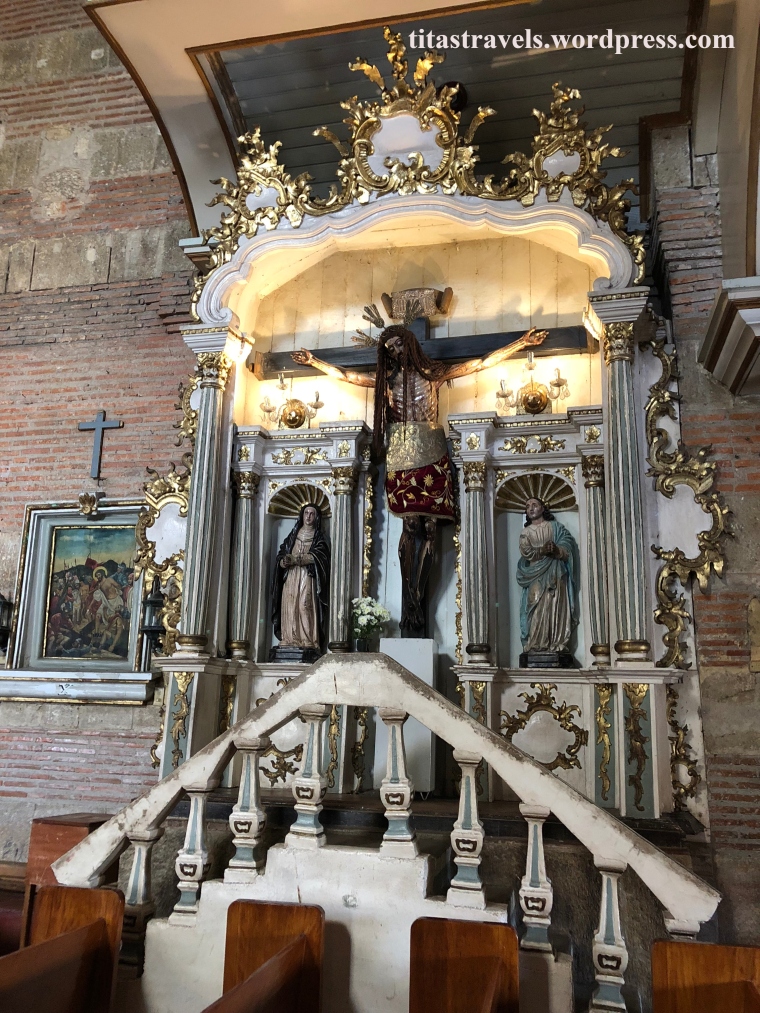
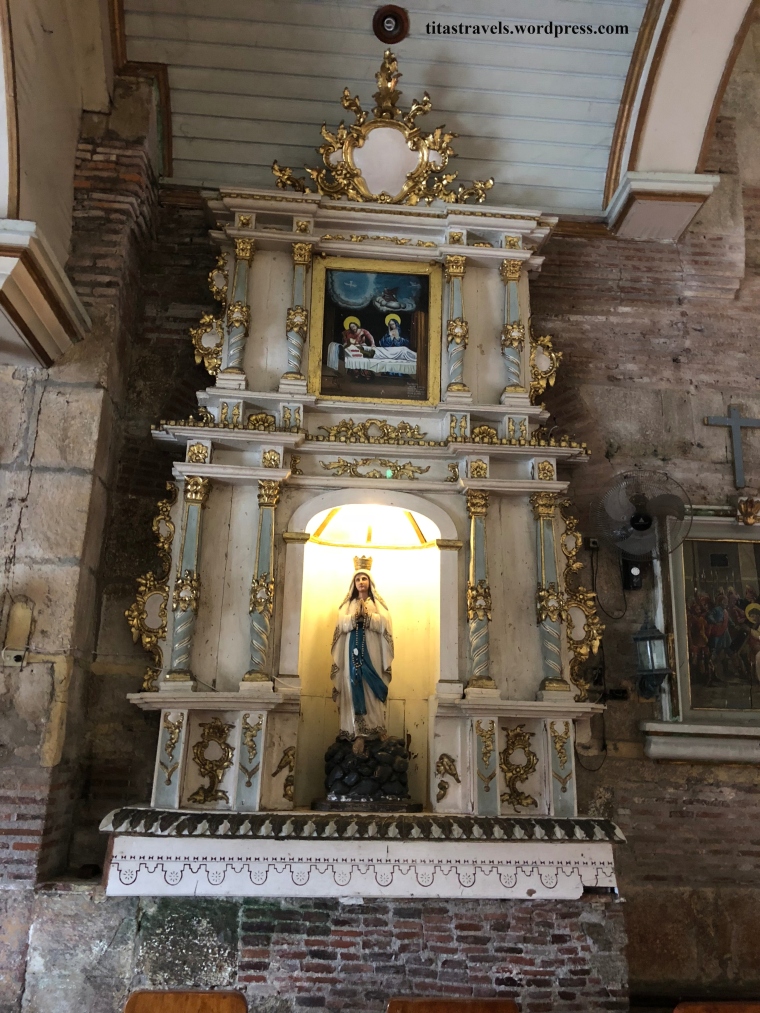
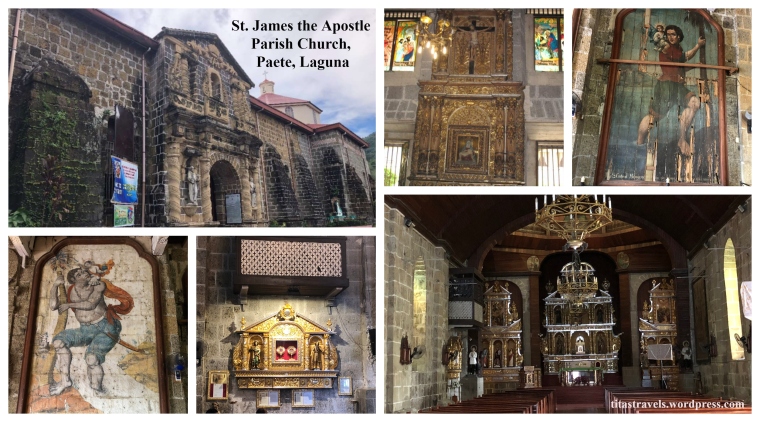
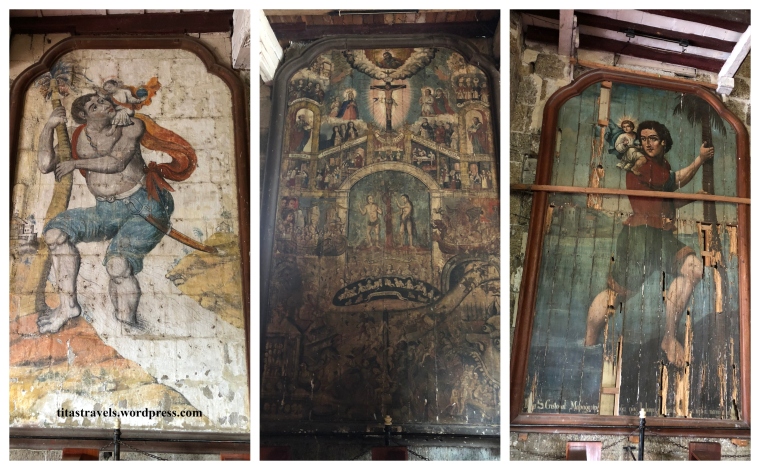 Murals, Interior, St. James the Apostle Parish Church, Paete, Laguna
Murals, Interior, St. James the Apostle Parish Church, Paete, Laguna These pictures were taken during my Visita Iglesia 2011.
These pictures were taken during my Visita Iglesia 2011. Photos in collage obtained from the official Facebook account of Hana:
Photos in collage obtained from the official Facebook account of Hana: 